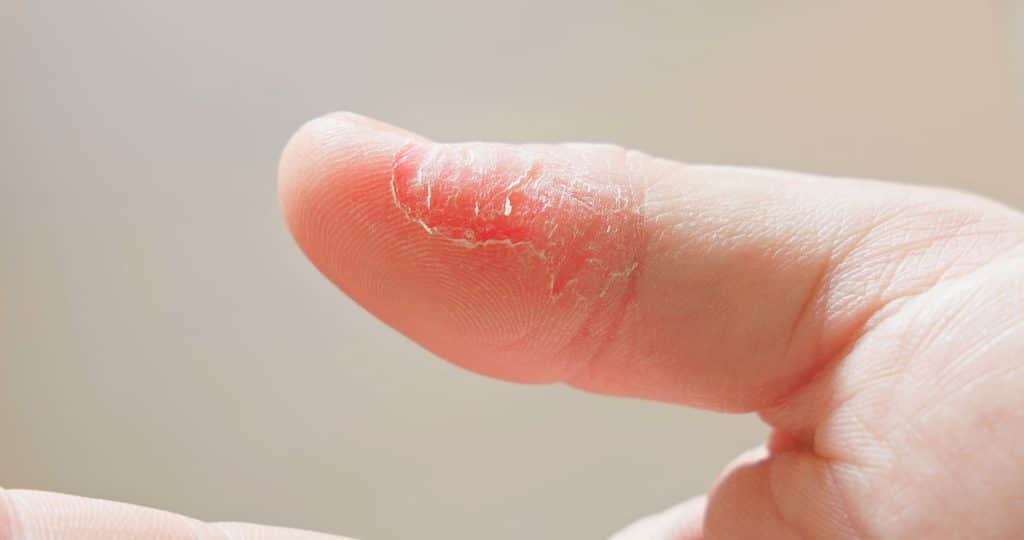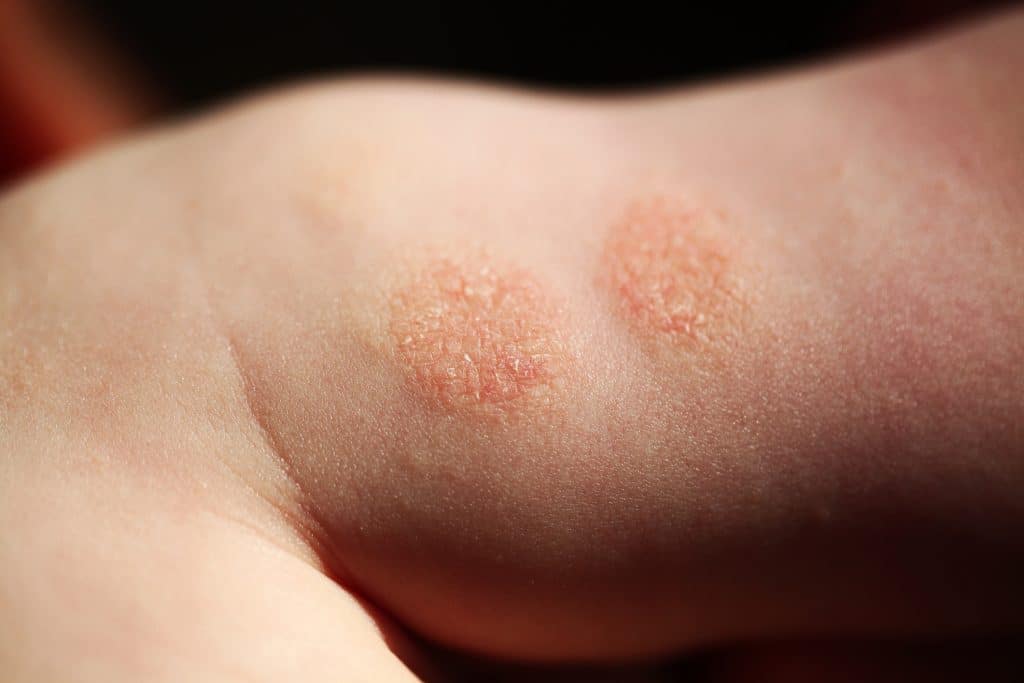Types of Eczema
Types of Eczema
Eczema is the name for a group of inflammatory skin conditions. There are seven different types of eczema. Learn about the causes, symptoms and treatments for each form of eczema.
What are the different types of eczema?
Eczema is the name for a group of inflammatory skin conditions that cause skin to become dry, itchy, flaky and bumpy. There are seven different types of eczema:
- Atopic dermatitis
- Contact dermatitis
- Dyshidrotic eczema
- Neurodermatitis
- Nummular eczema
- Seborrheic dermatitis
- Stasis dermatitis
While the exact cause of eczema is unknown, researchers do know that people who develop eczema do so because of a combination of genes and environmental triggers. Some people with eczema have a fault with the gene responsible for creating filaggrin. Filaggrin is a protein that helps our bodies maintain a healthy, protective barrier on the very top layer of the skin. Without enough filaggrin to build a strong skin barrier, moisture can escape and bacteria, viruses and more can enter.
Can you have more than one type?
It’s possible to experience more than one type of eczema at the same time or at different times on multiple parts of the body. For effective diagnosis and management, it’s crucial to know what type you are experiencing. Dermatologists can help identify which type or types of eczema you may have and how to treat and prevent eczema flares of all types.
What’s the difference between each type?
Depending on the type of eczema, there may be different causes, symptoms and treatment. Below is an summary of each type of eczema.
Basics of atopic dermatitis
Atopic dermatitis is the most common and chronic form of eczema, often starting in infancy or early childhood, but it can persist into adulthood or develop later in life. It is characterised by dry and very itchy patches of skin that may crack, ooze or form crusts. Atopic dermatitis can appear as red, gray, brown or purple depending on skin tone. Commonly affected areas include the face, hands, inside the elbows and behind the knees, although it can appear anywhere on the body.
Atopic dermatitis often occurs alongside asthma and allergic rhinitis (also known as “hay fever”), and it can run in families. Atopic dermatitis is thought to result from a combination of genetic, environmental and immune system factors. In people with atopic dermatitis, the skin barrier is weakened, making it more susceptible to dryness, irritants, allergens and microbes. Symptoms can be triggered by allergens, harsh soaps, cold weather or stress, among other factors. While it cannot be cured, treatment focuses on managing symptoms and reducing flares through routine moisturising, anti-inflammatory medications and lifestyle adjustments.
Basics of contact dermatitis
Contact dermatitis develops when the skin comes into direct contact with a substance that causes irritation or an allergic reaction. Irritant contact dermatitis occurs when substances like soaps or chemicals cause direct damage to the skin, while allergic contact dermatitis is an immune reaction on the skin set off by allergens like nickel or poison ivy.
Symptoms include redness, swelling, itching and sometimes blisters. The reaction is usually limited to the area of skin that comes in contact with the irritant or allergen, but it can be severe if exposure continues.
This condition can affect anyone. It can be occupational, meaning it occurrs in people exposed to allergens or irritants at work. Once the trigger is identified, staying away from the substance is critical to prevent further reactions.
Basics of dyshidrotic eczema

Dyshidrotic eczema is a condition characterised by the sudden appearance of small, intensely itchy blisters on the sides of the fingers, toes, palms or soles of the feet. These blisters can cause significant discomfort and may be filled with fluid. Over time, the affected skin may crack, peel or thicken, especially if the condition becomes chronic. Triggers include stress, exposure to certain metals (like nickel or cobalt), seasonal allergies or excessive moisture on the hands and feet due to an incorrect immune response and improper sweating mechanisms in people with dyshidrotic eczema.
This form of eczema is more common in older children and adults and tends to occur in cycles, with flares lasting for weeks before subsiding. The symptoms can be managed with topical steroids, antihistamines or lifestyle modifications like wearing gloves or avoiding irritants.
Basics of neurodermatitis
Neurodermatitis is characterised by intense itching. It often starts with a patch of itchy skin. This becomes more irritated when scratched, leading to a cycle of itching and scratching. It can result in thick, leathery patches of skin and can be triggered by stress.
Basics of nummular eczema

Nummular eczema, also known as nummular dermatitis or discoid eczema, is characterised by coin-shaped spots of irritated, itchy skin. These spots can become crusty or scaly. It is often mistaken for ringworm due to their similarities in appearance.
Basics of seborrheic dermatitis
Seborrheic dermatitis is a chronic form of eczema that affects oily areas of the body, such as the scalp, face (around the nose and eyebrows) and/or upper and central chest. It causes red, greasy and inflamed skin covered with white or yellowish scales. In adults, it is commonly referred to as dandruff when it appears on the scalp, and in infants, it is called “cradle cap.” The condition can be recurrent, with flares often sparked by stress, cold weather, hygiene practices or hormonal changes.
Treatment often includes medicated shampoos, topical antifungal or corticosteroid creams and maintaining a regular skincare routine to control symptoms. In severe cases, other prescription medications may be necessary.
Basics of stasis dermatitis
Stasis dermatitis develops due to poor circulation in the lower legs, often as a result of chronic venous insufficiency, where blood pools in the veins instead of flowing back to the heart. The condition typically presents with swelling, redness and itching, with the skin becoming dry, scaly and discolored over time. In severe cases, open sores or ulcers may form, increasing the risk of infection.
This condition is most common in older adults and those with underlying vein issues, such as varicose veins or a history of blood clots. Treatment focuses on improving circulation through compression stockings, physical movements, raising the legs and managing inflammation with topical treatments. Long-term management is crucial to prevent complications like ulcers or skin infections.
Featured Bragan Skincare Products
-
€39.99 – €100.00Price range: €39.99 through €100.00Select options This product has multiple variants. The options may be chosen on the product page
-
€100.00Select options This product has multiple variants. The options may be chosen on the product page
